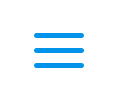

| What is LTCC Technology? |
| Date: 2022-01-17 View: 789 |
|
What is Low Temperature Co-Fired Ceramic (LTCC) technology?
LTCC (Low Temperature Co-Fired Ceramic) technology is a way to manufacturer multilayer circuits from ceramic substrates. A typical LTCC device consists of multiple dielectric layers, screen-printed or photo-imaged low-loss conductors, embedded baluns, resistors & capacitors and via holes for interconnecting the multiple layers. LTCC devices are produced by applying conductive, dielectric, and resistive metal pastes on each ceramic substrate sheet or tape as needed and then pressed together in a specified sequence, laminating them together. Modules made using LTCC technology have a hermetic and monolithic structure. This ceramic sheet of printed metal is then fired or ‘sintered’ which takes place at ‘low temperatures’ of about 850°C (less than 1000°C). This temperature range allows for the addition of low-resistivity conductor materials such as silver and gold instead of the molybdenum and tungsten materials typically used with high temperature cofired-ceramic (HTCC) processes. LTCC is a repeatable process and can be used to reliably produce large quantities of RF and microwave components measuring a fraction of the size of components fabricated with conventional substrate materials.
LTCC technology yields a highly integrated surface-mount device that can, in turn, be used as a platform to mount active components, such as transistors, diode quads, and monolithic amplifiers, to form a miniature multifunction assembly. The resulting package is a multilayer, three-dimensional design that is considerably more compact than a traditional planar microwave component. High-level integration allows LTCC components to be combined within a miniature surface-mount package, eliminating the need for many external components. Moreover, LTCC designs can employ circuit elements in die form for further size reduction. Since the ceramic materials used in LTCC designs are inherently very temperature stable, the need to compensate for temperature variations is also greatly reduced.
Advantages of LTCC Technology
Key Features of LTCC Technology Compared to conventional circuit carriers such as FR4, LTCC packages can precisely meet these requirements. LTCC Technology is often used to develop RF Filters, Inductors and Capacitors. It can also be used for a wide range of other devices. Typical areas of application include medical technology, automotive industry, high-frequency technology, space technology and communications technology. |
Product Categories
RF Isolators
RF Circulators
Coaxial Fixed Attenuators
Coaxial Fixed Terminations
High Power RF Attenuators
Copyright © 2020 Kete Microwave Electronics Co.,Ltd. All Rights Reserved.
